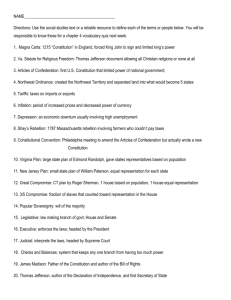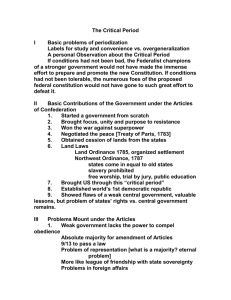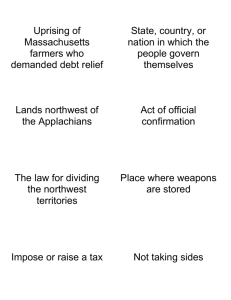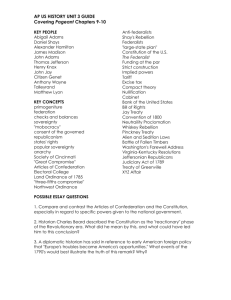Chapter 5 Vocabulary
advertisement
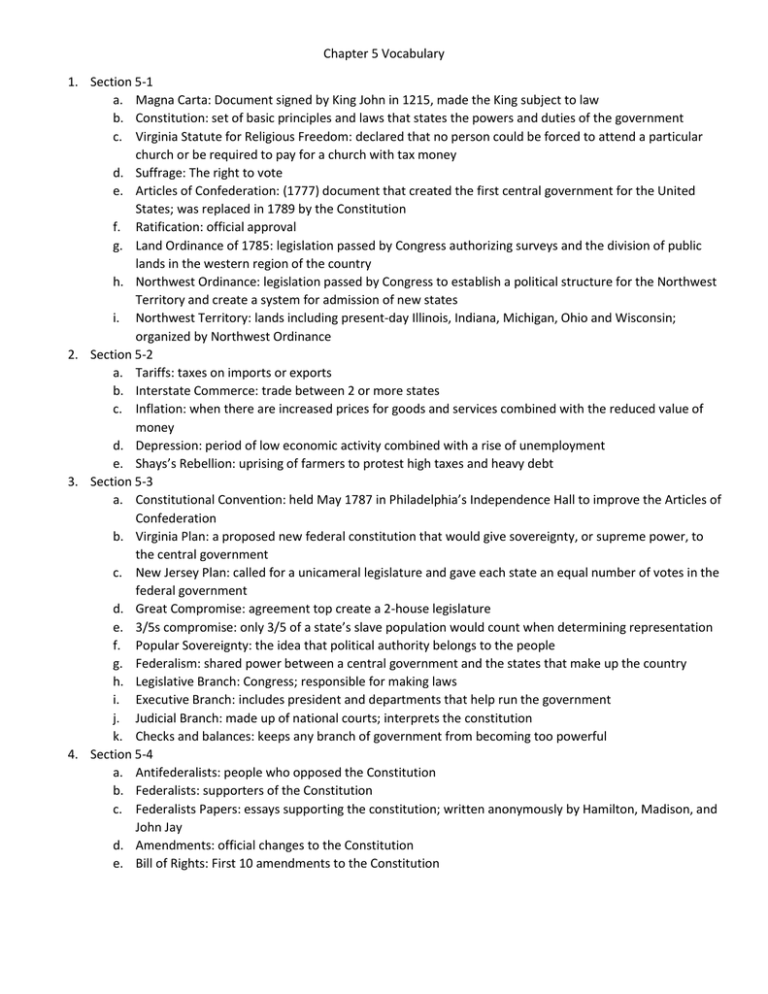
Chapter 5 Vocabulary 1. Section 5-1 a. Magna Carta: Document signed by King John in 1215, made the King subject to law b. Constitution: set of basic principles and laws that states the powers and duties of the government c. Virginia Statute for Religious Freedom: declared that no person could be forced to attend a particular church or be required to pay for a church with tax money d. Suffrage: The right to vote e. Articles of Confederation: (1777) document that created the first central government for the United States; was replaced in 1789 by the Constitution f. Ratification: official approval g. Land Ordinance of 1785: legislation passed by Congress authorizing surveys and the division of public lands in the western region of the country h. Northwest Ordinance: legislation passed by Congress to establish a political structure for the Northwest Territory and create a system for admission of new states i. Northwest Territory: lands including present-day Illinois, Indiana, Michigan, Ohio and Wisconsin; organized by Northwest Ordinance 2. Section 5-2 a. Tariffs: taxes on imports or exports b. Interstate Commerce: trade between 2 or more states c. Inflation: when there are increased prices for goods and services combined with the reduced value of money d. Depression: period of low economic activity combined with a rise of unemployment e. Shays’s Rebellion: uprising of farmers to protest high taxes and heavy debt 3. Section 5-3 a. Constitutional Convention: held May 1787 in Philadelphia’s Independence Hall to improve the Articles of Confederation b. Virginia Plan: a proposed new federal constitution that would give sovereignty, or supreme power, to the central government c. New Jersey Plan: called for a unicameral legislature and gave each state an equal number of votes in the federal government d. Great Compromise: agreement top create a 2-house legislature e. 3/5s compromise: only 3/5 of a state’s slave population would count when determining representation f. Popular Sovereignty: the idea that political authority belongs to the people g. Federalism: shared power between a central government and the states that make up the country h. Legislative Branch: Congress; responsible for making laws i. Executive Branch: includes president and departments that help run the government j. Judicial Branch: made up of national courts; interprets the constitution k. Checks and balances: keeps any branch of government from becoming too powerful 4. Section 5-4 a. Antifederalists: people who opposed the Constitution b. Federalists: supporters of the Constitution c. Federalists Papers: essays supporting the constitution; written anonymously by Hamilton, Madison, and John Jay d. Amendments: official changes to the Constitution e. Bill of Rights: First 10 amendments to the Constitution

